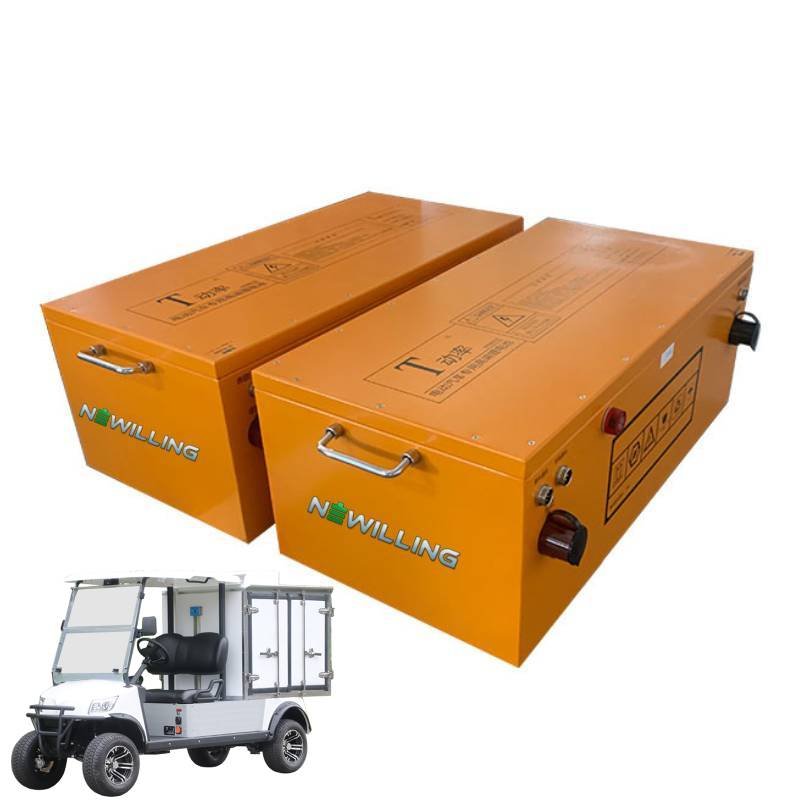Golf carts have become an essential mode of transportation in various settings, from golf courses to gated communities. The advent of lithium iron phosphate (LiFePO4) batteries has revolutionized the performance and efficiency of these carts. However, like any technology, they are not immune to issues. One common problem users face is a 48V golf cart LiFePO4 battery that won’t charge. In this comprehensive guide, we will explore the potential causes and solutions to this issue, with insights from NEWILLING, a leading lithium battery manufacturer.
Understanding LiFePO4 Batteries
Before diving into troubleshooting, it’s crucial to understand what makes LiFePO4 batteries unique. LiFePO4, or lithium iron phosphate, is a type of lithium-ion battery known for its stability, safety, and long cycle life. These batteries are particularly suitable for high-power applications like golf carts due to their ability to deliver consistent power over time.

NEWILLING, as a reputable manufacturer, emphasizes the importance of understanding the battery’s chemistry and design to effectively troubleshoot and maintain these batteries. LiFePO4 batteries are designed to withstand various environmental conditions and have a lower risk of overheating compared to other lithium batteries.
Common Causes of Charging Issues
When a 48V LiFePO4 battery fails to charge, several factors could be at play. Identifying the root cause is the first step towards resolving the issue. Here are some common causes:
- Faulty Charger: A malfunctioning charger is one of the most common reasons a battery won’t charge. It’s essential to ensure the charger is compatible with LiFePO4 batteries and is functioning correctly.
- Battery Management System (BMS) Issues: The BMS is crucial in protecting the battery from overcharging, undercharging, and other potential damages. A faulty BMS can prevent the battery from charging properly.
- Connection Problems: Loose or corroded connections can interrupt the charging process. Regular inspection and maintenance of connections are necessary.
- Cell Imbalance: Over time, the cells within the battery may become imbalanced, leading to charging issues. Balancing the cells can often resolve this problem.
- Temperature Extremes: Charging in extremely hot or cold conditions can affect the battery’s ability to charge. LiFePO4 batteries have specific temperature ranges for optimal charging.
Step-by-Step Troubleshooting Guide
Now that we have identified potential causes, let’s delve into a step-by-step troubleshooting guide to address these issues. Following these steps can help you diagnose and resolve charging problems effectively.
Step 1: Inspect the Charger
Begin by examining the charger. Ensure it is plugged in correctly and that the power source is active. Check for any visible signs of damage, such as frayed wires or burnt components. If possible, test the charger with another compatible battery to confirm its functionality.
Step 2: Check Battery Connections
Inspect the battery terminals and connectors. Look for signs of corrosion, which can impede the flow of electricity. Clean the terminals with a mixture of baking soda and water, and ensure all connections are tight and secure.
Step 3: Evaluate the Battery Management System (BMS)
The BMS is integral to the battery’s operation. If you suspect a BMS issue, consult the battery’s manual or contact NEWILLING for guidance. In some cases, resetting the BMS by disconnecting and reconnecting the battery can resolve the issue.
Step 4: Assess Cell Balance
Use a multimeter to measure the voltage of each cell within the battery. If there is a significant imbalance, consider using a balancing charger or consulting a professional to balance the cells.
Step 5: Consider Environmental Factors
Ensure the battery is being charged within the recommended temperature range. If the environment is too cold or too hot, move the battery to a more suitable location and attempt to charge it again.

Preventative Maintenance Tips
To avoid future charging issues, regular maintenance and care of your LiFePO4 battery are essential. Here are some tips from NEWILLING:
- Regular Inspections: Periodically check the battery, charger, and connections for any signs of wear or damage.
- Proper Storage: Store the battery in a cool, dry place when not in use. Avoid extreme temperatures and humidity.
- Use Compatible Chargers: Always use chargers that are specifically designed for LiFePO4 batteries to prevent damage.
- Follow Manufacturer Guidelines: Adhere to the guidelines provided by NEWILLING for optimal battery performance and longevity.
When to Seek Professional Help
While many charging issues can be resolved with the steps outlined above, there are instances where professional assistance may be necessary. If the battery remains unresponsive or if you are uncomfortable performing any of the troubleshooting steps, contact a professional technician or reach out to NEWILLING for support.
NEWILLING offers expert advice and services to ensure your LiFePO4 battery operates at peak performance. Their team of professionals can diagnose complex issues and provide solutions tailored to your specific needs.
Conclusion
Troubleshooting a 48V golf cart LiFePO4 battery that won’t charge can be a straightforward process if approached methodically. By understanding the potential causes and following a structured troubleshooting guide, you can often resolve the issue without the need for professional intervention.
However, when in doubt, seeking assistance from experts like those at NEWILLING can save time and prevent further damage. Regular maintenance and adherence to manufacturer guidelines will also go a long way in ensuring your battery remains in excellent condition, providing reliable power for your golf cart.
By taking proactive steps and being informed, you can enjoy the benefits of LiFePO4 technology while minimizing downtime and ensuring a smooth, efficient ride on your golf cart.

